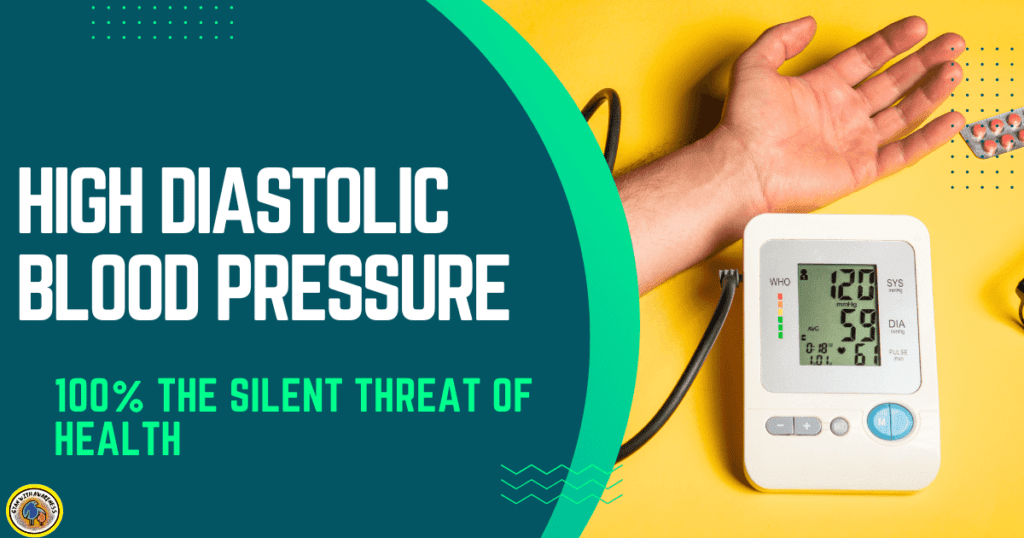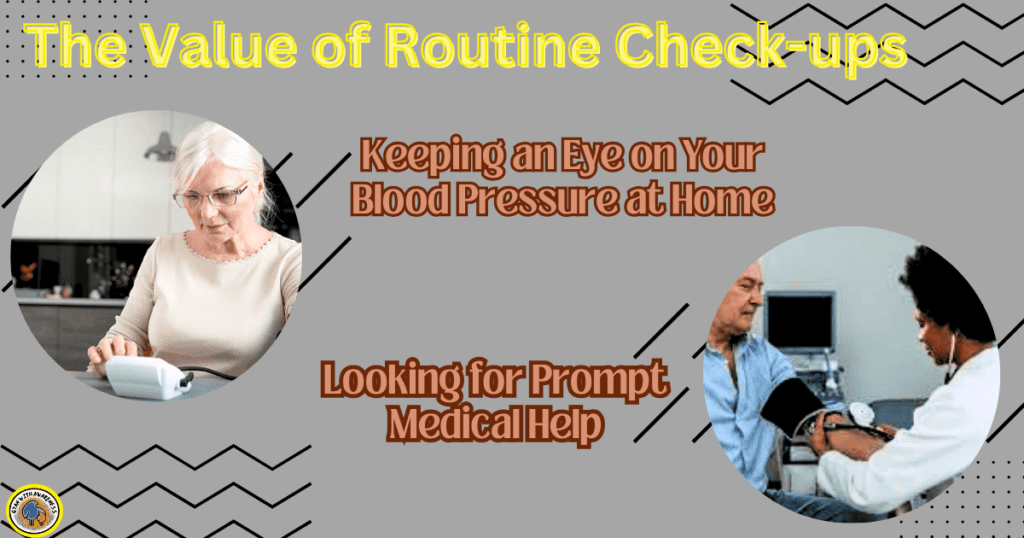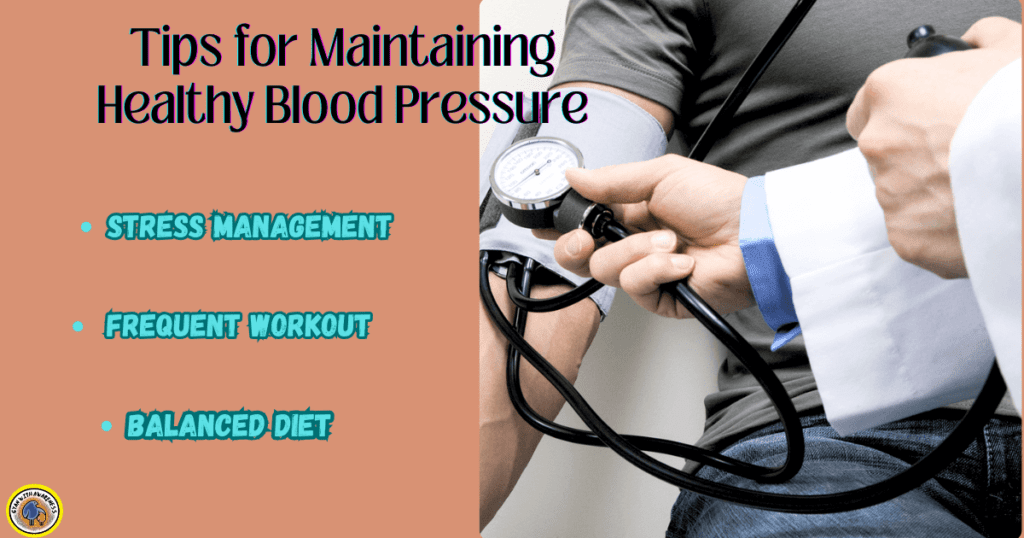High diastolic blood pressure, often overshadowed by its counterpart, systolic blood pressure, plays a crucial role in assessing cardiovascular health. In this article, we delve into the intricacies of high diastolic blood pressure, exploring its definition, causes, symptoms, and potential effects on overall well-being. Understanding and managing this silent threat is vital for maintaining a healthy and robust cardiovascular system.
When a blood pressure reading’s bottom number continuously rises above 80 mm Hg, it’s referred to as high diastolic blood pressure, or diastolic hypertension. Although the top figure, or systolic blood pressure, is more commonly known and indicates the pressure within the arteries during a heartbeat, diastolic blood pressure is just as significant. It depicts the pressure within the arteries during the intervals between heartbeats.
When diastolic blood pressure is consistently high, it can indicate potential health risks. Chronic high diastolic blood pressure can strain the arteries over time, leading to complications such as heart disease, stroke, and kidney damage. Additionally, it can contribute to other health issues like vision problems and cognitive decline.

Also Read:
The Benefits of Tofu: Best Diabetes-Friendly Food, Part 12
Diabetes Cure | Best Mediterranean Chickpea Salad | Part 11
Innovative Grilled Salmon Recipes | Diabetes Cure | Part 10
Diabetes Cure | Delicious Barley Vegetable Soup | Part 9
Delicious Gooseberry Chutney | Diabetes Cure | Part 8
Exquisite Lentil Salad | Diabetes Cure Recipes | Part 7
Best Diabetes Cure | Grilled Fish Recipes | Part 6
Best Diabetes Cure | Brazil Nuts Recipes | Part 5
Best Diabetes Cure | Greek Yogurt Smoothie Recipes | Part 4
Best Diabetes Cure | Greek Salad Recipe | Part 3
Powerful Diabetes Cure Recipes | Detox Island Green Smoothie | Part 2
Best Diabetes Cure | Curd Rice Recipe | Part 1
High diastolic blood pressure can result from a number of factors, such as underlying medical issues, lifestyle decisions, and heredity. The illness can be made worse by risk factors such stress, obesity, a sedentary lifestyle, high salt intake, and excessive alcohol use.
Changing one’s lifestyle and sometimes taking medication are the usual approaches to managing high diastolic blood pressure. A nutritious diet low in sodium and saturated fats, frequent exercise, preserving a healthy weight, controlling stress, consuming less alcohol, and giving up smoking are a few examples of lifestyle modifications.
The proper management of high diastolic blood pressure and the mitigation of associated consequences necessitate routine blood pressure monitoring and close collaboration with healthcare specialists.
Diastolic Blood Pressure
The force on the artery walls during the heart’s resting phase is represented by the diastolic blood pressure. It is a crucial part of the blood pressure measurement, represented by the lower figure.
How Important It Is to Check Blood Pressure:
Maintaining and treating a variety of cardiovascular disorders requires routine blood pressure monitoring. Especially during the relaxation period, diastolic blood pressure offers important information about the health of the heart.
Understanding High Diastolic Blood Pressure
Normal vs. High Diastolic Blood Pressure
Differentiating between normal and high diastolic blood pressure is crucial for early intervention. We explore the accepted blood pressure ranges and the implications of elevated diastolic readings.
Health Risks Associated with High Diastolic Blood Pressure
High diastolic blood pressure is linked to an increased risk of cardiovascular diseases, strokes, and other health complications. Unraveling these risks helps individuals comprehend the urgency of managing elevated readings.
Causes of High Diastolic Blood Pressure
Lifestyle Factors
Exploring how lifestyle choices, including diet, physical activity, and stress levels, contribute to high diastolic blood pressure. Practical tips for making positive changes are discussed.
Medical Conditions
Examining underlying medical conditions that may lead to high diastolic blood pressure. Recognizing these conditions is crucial for effective management and treatment.
Recognizing Symptoms
Physical Symptoms
Highlighting common physical symptoms associated with high diastolic blood pressure. Increased awareness of these signs empowers individuals to seek timely medical attention.
High diastolic blood pressure is silent:
Talking about how difficult it can be to diagnose high diastolic blood pressure because it frequently exhibits no symptoms. stressing the value of routine examinations in order to discover problems early.
Diagnosing High Diastolic Blood Pressure
Blood Pressure Measurement Techniques
Detailing the various methods for measuring blood pressure, both at home and in a clinical setting. Proper techniques ensure accurate readings for diagnosis and monitoring.
Seeking Professional Medical Advice
Encouraging individuals to consult healthcare professionals for a thorough diagnosis and personalized treatment plans. Self-monitoring tips are also provided.
Effects on Overall Health
Impact on Heart Health
Exploring how high diastolic blood pressure affects the heart’s health and functionality. Insights into potential complications and the importance of preventive measures.
Connection with Other Health Issues
Investigating the links between high diastolic blood pressure and other health conditions, such as kidney disease and diabetes. Comprehensive health management strategies are discussed.
Prevention Techniques
Modifications to Lifestyle
providing helpful advice on how to change your lifestyle to prevent and treat high diastolic blood pressure. The general state of cardiovascular health can be significantly improved by making little but effective modifications.
Dietary Suggestions
highlighting the need to eat a balanced diet to preserve appropriate blood pressure levels. Particular food suggestions and their hazards are discussed.
Options for Treatment
Medication
A list of typical drugs that are recommended to treat high diastolic blood pressure explanations of their workings, possible adverse effects, and the significance of taking prescriptions as directed.
Non-pharmaceutical Methods
investigating non-pharmacological methods such as regular exercise, stress management strategies, and complementary therapy. The importance of managing blood pressure holistically is highlighted.
The Value of Routine Check-ups

Keeping an Eye on Your Blood Pressure at Home
Advice on using home blood pressure monitors and other methods of keeping an eye on blood pressure at home. The value of routine self-evaluations in managing one’s health over the long run.
Looking for Prompt Medical Help
highlighting how important routine medical exams are for early detection and treatment. A key factor in avoiding problems related to high diastolic blood pressure is early detection.
Personal Stories
Real-life Experiences with High Diastolic Blood Pressure
Sharing personal stories of individuals who have navigated the challenges of high diastolic blood pressure. Insights into their journeys, lessons learned, and advice for others facing similar situations.
Lessons Learned and Shared Insights
Reflecting on the experiences of individuals managing high diastolic blood pressure. Extracting valuable lessons and shared insights for a more profound understanding.
Tips for Maintaining Healthy Blood Pressure

Stress Management
Exploring the connection between stress and blood pressure. Practical tips for stress management to promote overall cardiovascular health.
Frequent Workout:
highlighting how maintaining good blood pressure levels is facilitated by regular physical activity. customized workout regimens for people of different fitness levels.
Balanced Diet
Providing specific dietary guidelines for maintaining optimal blood pressure. Nutritional choices that support heart health and reduce the risk of high diastolic blood pressure.
Myth-busting: Common Misconceptions about Blood Pressure
Dispelling Misinformation
Addressing common misconceptions surrounding blood pressure, helping readers distinguish between fact and fiction. Myths related to diet, exercise, and lifestyle choices are clarified.
Clarifying Myths
Offering evidence-based information to debunk persistent myths. Clearing the air on popular beliefs that may contribute to confusion about blood pressure management.
The Role of Genetics
The Genetic Predisposition to High Blood Pressure and Its Role
Investigating how heredity contributes to high diastolic blood pressure. Recognizing the relevance of individualized preventative interventions and the genetic factors that may raise risk.
Lifestyle Modifications for Genetic Factors
Providing guidance on lifestyle modifications for individuals with a genetic predisposition to high blood pressure. Strategies to mitigate genetic risks through healthy choices.
Building Awareness

Importance of Public Education
Advocating for increased public awareness of high diastolic blood pressure. The role of education in prevention and early intervention is to reduce the prevalence of this silent health threat.
Campaigns and Initiatives:
Showcasing successful awareness campaigns and initiatives aimed at educating communities about the risks and management of high diastolic blood pressure. Highlighting the impact of collective efforts.
In conclusion, understanding and addressing high diastolic blood pressure is paramount for overall cardiovascular health. From recognizing symptoms to implementing preventive measures, this comprehensive guide empowers individuals to take charge of their well-being. Regular check-ups, healthy lifestyle choices, and awareness are the cornerstones of effective management.
FAQ:
♦ Is elevated diastolic blood pressure usually asymptomatic, or may it create symptoms?
Since high diastolic blood pressure may not cause any symptoms, routine examinations are essential for early identification. On the other hand, some people could have bodily symptoms including weariness and headaches.
♦ Is it possible to reduce high diastolic blood pressure naturally without taking medication?
Among the lifestyle modifications that could help lower high diastolic blood pressure are balanced eating, frequent exercise, and stress reduction. For tailored counsel, it is best to speak with a healthcare professional.
♦ Is it inherited to have high diastolic blood pressure?
A hereditary component contributes to high blood pressure. Even while people with a family history may already be more susceptible, lifestyle changes can still be quite effective in preventing the disease.
♦ Does stress have a role in elevated diastolic blood pressure?
Long-term stress can indeed raise blood pressure and cause high diastolic readings. Using stress-reduction strategies is crucial for maintaining cardiovascular health in general.
♦ How often should one check their blood pressure at home?
The frequency of monitoring for each individual is determined by their unique health conditions. However, self-checking is encouraged, especially for those with high diastolic blood pressure. For particular guidance, see a healthcare professional.
Also Read:
The Benefits of Tofu: Best Diabetes-Friendly Food, Part 12
Diabetes Cure | Best Mediterranean Chickpea Salad | Part 11
Innovative Grilled Salmon Recipes | Diabetes Cure | Part 10
Diabetes Cure | Delicious Barley Vegetable Soup | Part 9
Delicious Gooseberry Chutney | Diabetes Cure | Part 8
Exquisite Lentil Salad | Diabetes Cure Recipes | Part 7
Best Diabetes Cure | Grilled Fish Recipes | Part 6
Best Diabetes Cure | Brazil Nuts Recipes | Part 5
Best Diabetes Cure | Greek Yogurt Smoothie Recipes | Part 4
Best Diabetes Cure | Greek Salad Recipe | Part 3
Powerful Diabetes Cure Recipes | Detox Island Green Smoothie | Part 2